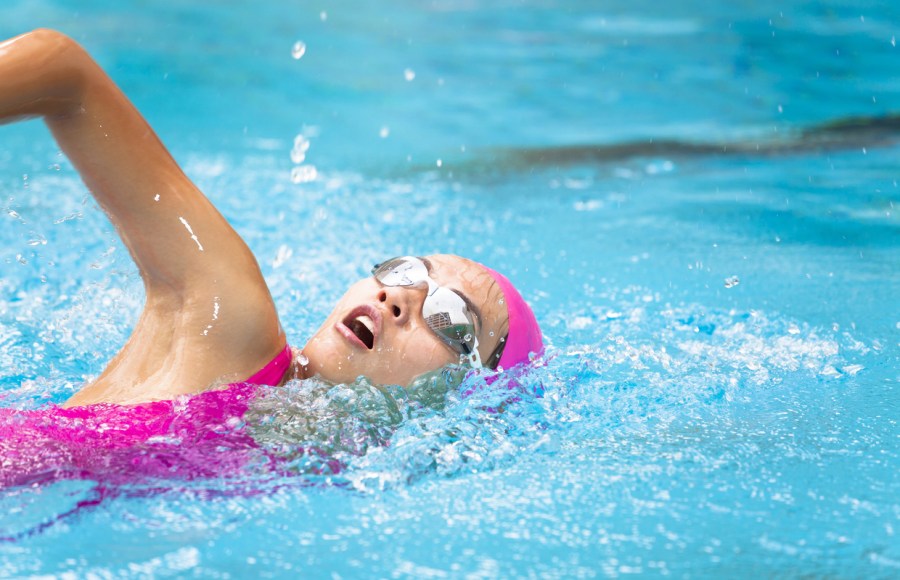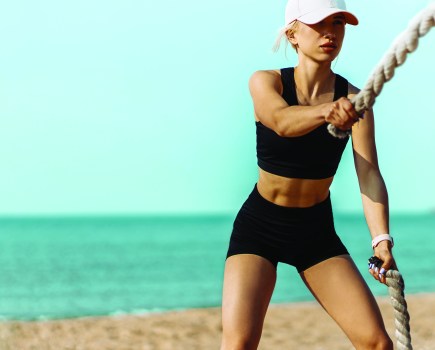
Lizzie Simmonds
After the GB Olympic swimming team inspired the nation with their haul of eight medals at the Tokyo Olympics (their most successful Games yet!) we’ve tapped former Olympic swimmer and Vitality Performance Champion Lizzie Simmonds for her top tips to improve your swimming technique for every stroke. Dive right in…!
Ever wondered how the professionals ace their swimming strokes? We’ve got some great top tips from Lizzie Simmonds, who explains how to improve your swimming techniques for four different strokes: front crawl, backstroke, breaststroke, and butterfly.
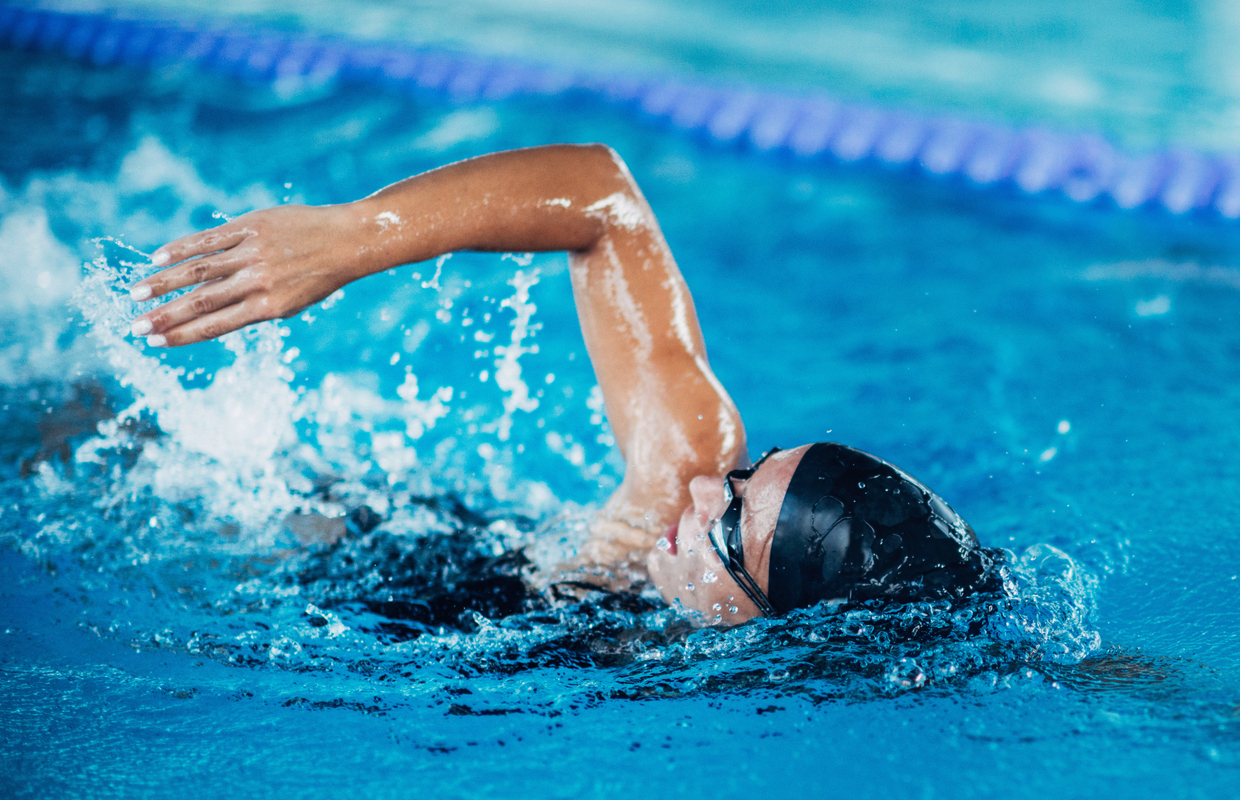
How to improve your swimming technique for front crawl
Swimming front crawl efficiently involves all sorts of coordinated movements; balancing arm strokes with leg kicks, plus remembering to breathe at the right time. If you’re struggling with coordination, try some of these elements whilst practising at the wall of the swimming pool.
1. Practise turning your head
To practise side breathing, you may want to stretch your arms out in front of you (holding onto the wall) and kick your legs behind you on the surface. Of course, you won’t move anywhere, but you’ll have the perfect opportunity to practise turning your head to the side to take a breath.
2. Don’t point your toes
For the front crawl kick, remember not to point your toes (even though this is what it looks like elite swimmers are doing!). The foot and ankle need to be relaxed, as this will allow you to utilise a greater range of motion during your kick. Your foot will naturally move into a streamlined position in the water, but you shouldn’t be actively forcing it!
3. Practise kicks at the wall
Breaking down strokes like this is really important, even elite swimmers do drills to improve one part of their stroke at a time. If you have little ones, practising at the swimming pool wall can be a safe way to introduce them to the feeling of putting their face in the water. Holding onto the wall and trying to kick as hard as they can is also a fun (and splashy) way to improve their leg kick! Just watch out for other swimmers who may not appreciate their efforts quite as much as you…
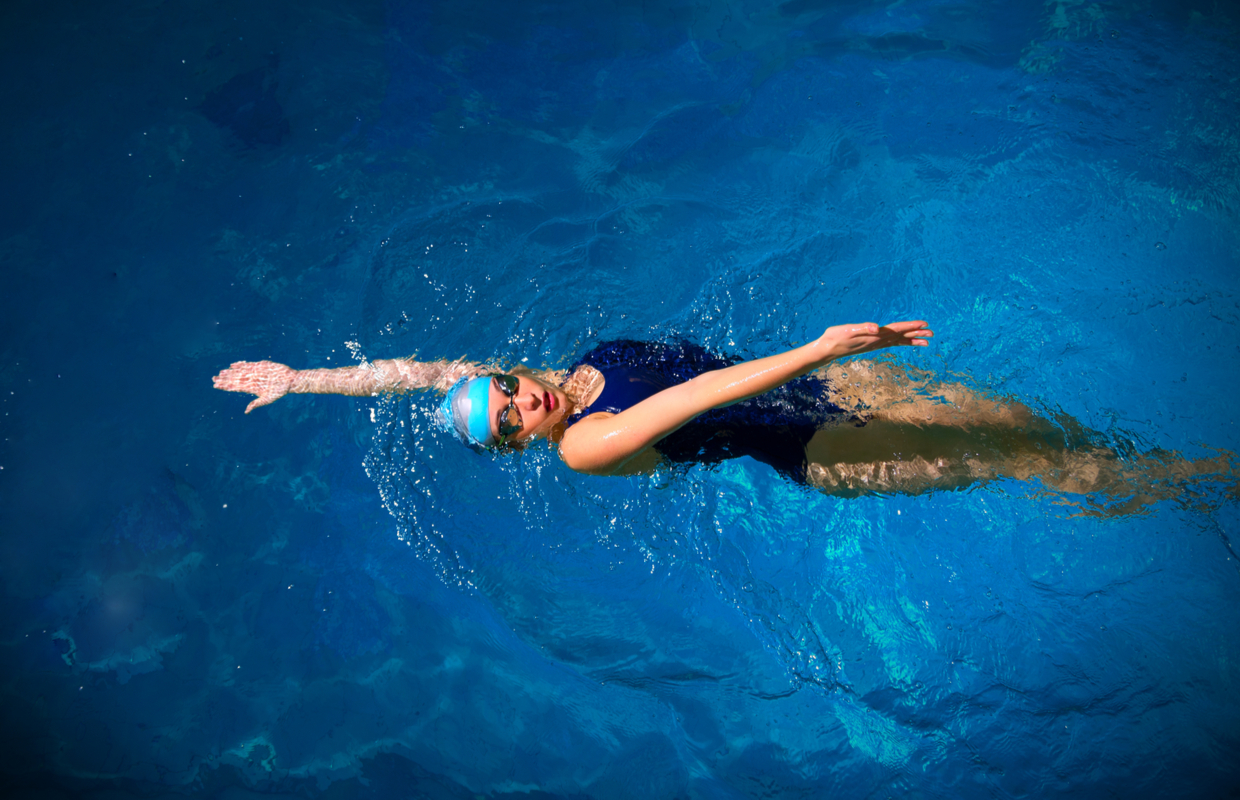
How to improve your backstroke swimming technique
When swimming backstroke, you’re aiming to rotate your body on an axis (as if there were a pole going down through the top of your head through your body). The arms and hips rotate together on this axis, whilst the head should stay perfectly still, looking up at the ceiling. Try these tips to master this stroke…
1. Perfect your head position
A fun drill to practise the backstroke head position involves bringing a paper cup to the pool. Fill the cup half full of pool water, then push off the wall (on the surface), carefully balancing the cup on your forehead and trying to swim backstroke without spilling any of the water. The aim is to still get great rotation of the shoulders and hips, without moving your head!
2. Work on your glutes
One of quickest ways to improve your backstroke is to increase your glute strength. Weak glutes mean that when you begin to tire during the stroke, the hips are likely to drop in the water. This of course increases drag, slowing you down. Working on glute strength in the gym can help you keep your hips high, enabling you to stay flat in the water.
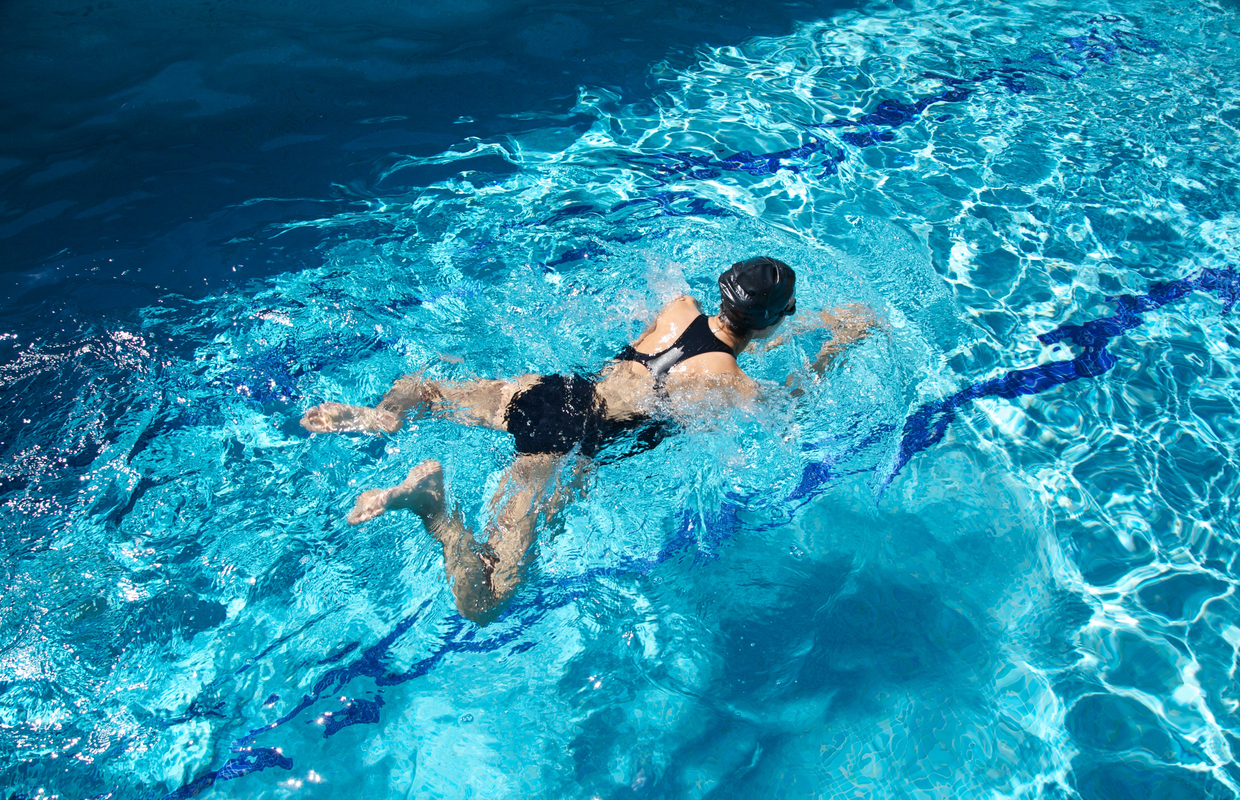
How to improve your breaststroke technique
Breaststroke can be one of the most relaxing strokes for casual pool-goers but it is technically very difficult to get right. It’s also the stroke that you will tend to see the most variation in at an elite level. A general rule of thumb is that it’s not about how hard you pull or kick, it’s about how fast you can return to a streamline position after every stroke. Here are some tips for perfecting the technique…
1. Make yourself streamlined
A great drill for perfecting the streamline position after each stroke is practicing your breaststroke leg kick with your arms held in a streamline (thumbs linked) position at the front. Even better, use a snorkel so that you don’t need to disrupt your line to breathe.
2. Keep your leg kicks narrow
When watching elite breaststrokers underwater, you’ll notice that most have a surprisingly narrow leg kick. This is because the power created by a wide leg kick is negated by the increase in drag. Your goal is to hinge at the knee and draw your heels up rather than out. This will keep your kick within your body line, maximising efficiency.
You can practise narrowing your leg kick by holding a pull buoy between your thighs and kicking without letting it go. Do a couple of lengths like this and then leave the pull buoy at the wall of the swimming pool and return to the main stroke, trying to emulate the narrow kick that you just practised.
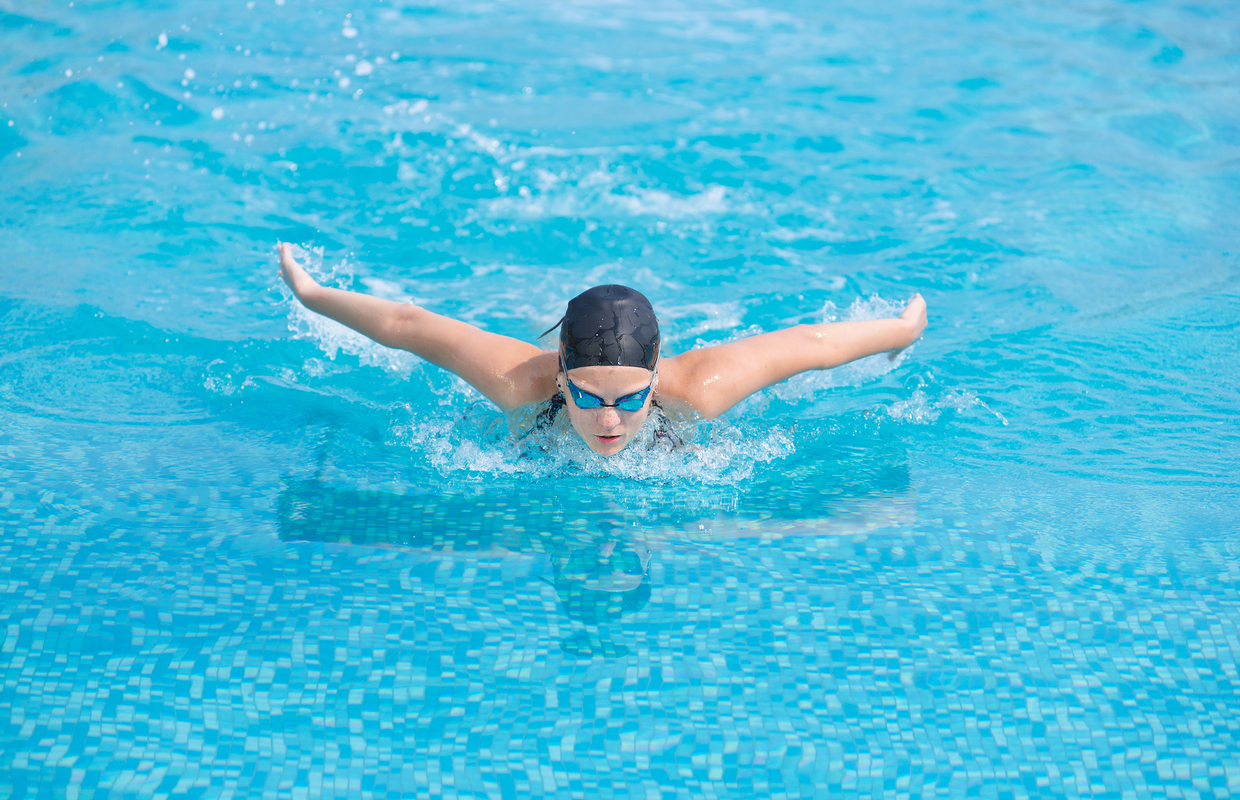
How to improve your butterfly stroke
Butterfly is usually seen as the most difficult stroke, even for elite swimmers. It requires a strong upper body, perfectly timed breathing and rhythmic momentum. Otherwise, it can feel like you’re sinking! Try these tips to improve your swimming technique for the butterfly stroke…
1. Don’t overdo the undulations
One of the biggest mistakes that beginners make when swimming the butterfly stroke is undulating up and down too much. When your arms enter the water at the front of the stroke, try shooting them forwards towards the end of the pool, rather than down towards the bottom. Flattening your stroke will save you energy and ensure your momentum is directed at moving you forwards.
2. Build your upper body strength
During the underwater catch phase, you should drop your fingertips towards the bottom of the pool, by bending at the elbow. Pull through underneath the body in this position, all the way to your hips, before exiting the water for the recovery part of the stroke where your arms return to the front of the body. Building strength in your triceps, pectoral, and latissimus dorsi muscles can help improve the force you are able to apply to the catch phase.
3. Perfect your breath
When breathing, try and keep your head low to the water. Raising up high means the rest of your body will drop down, which really increases your drag.






